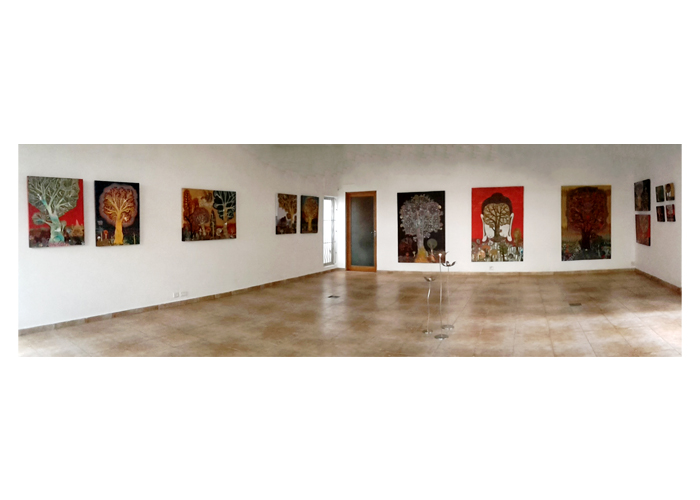





Kalpavriksha explores the spiritual harmony between trees and the deities on the canvas.
I am fascinated by trees and the deities associated with them and the intertwining symbolism between the two.
In India plants occupy an important place in Hindu mythology. Sacred plants like Neem, Banyan, Mango, Pipal are revered for their auspicious or medicinal qualities or by association with a deity from the Hindu Pantheon. For example Salabhanjika is a combination of Sala, referring to the Sala tree (Shorea Robusta), which is a symbol of the Hindu god Vishnu, and Bhanjika, meaning beautiful maiden. The image of woman and tree is found in Buddhist, Jain and Hindu art and was one of the motifs of nature worship adapted by these religions as they became established in India. Existing representations of nature in general, including that of female nature spirits (Yakshi), became semi-divine beings in Hindu, Jain and Buddhist pantheons, and their images were positioned in the temple at points of transition from worldly to sacred spacs.
In my art, tree goddesses are installed leaning out from the exterior of the temple where devotees gathered before entering the shrine. Although not intended as an object of worship, the power of the tree goddess was frequently invoked due to her association with fertility.
The paintings express these sentiments and project a landscape that is filled with symbolism and metaphors.
Chandra Morkonda
